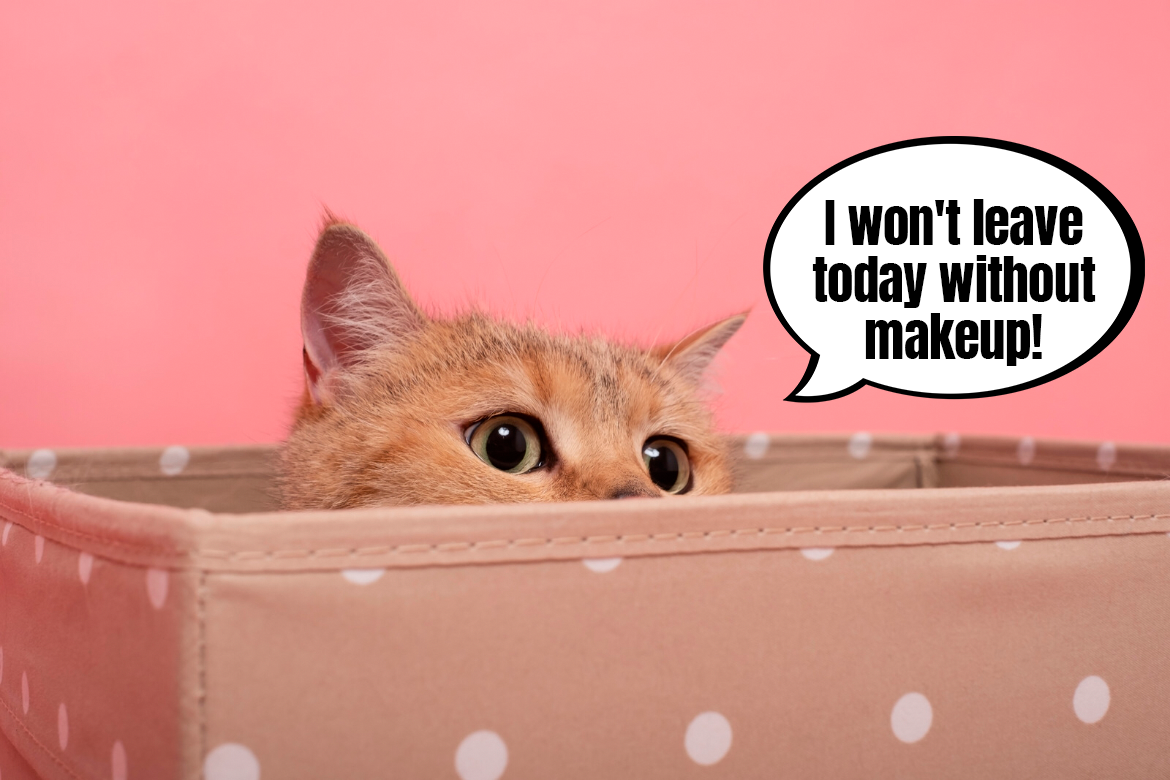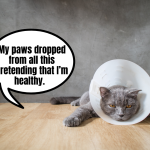Have you ever heard about cat acne? Yes, dear fabCats – pimples popping up are not just the bane of teenagers. Acne is just as common for cats as it is for humans and it’s not at all connected with consuming too much chocolate (which we obviously don’t give to cats :)) – it can happen around the cat’s mouth at any age. It’s one of the typical dermatological issues for cats and though it’s not dangerous most of the time, it’s good to know what it looks like, what it means and when a help from a veterinarian might be necessary. No slacking – sharpen your claws and get ready for a bowl full of useful information.
Cat acne – how and why?
As long as acne isn’t caused by bacterial infections, cat dermatologists treat it as a common problem that can be fixed with proper hygiene and topical care. Cat acne is caused most of the time by hormone changes, e.g. during puberty, but also by sweat glands clogging, food allergies or improper hygiene. The last one is, actually, the biggest cause of acne for cats. They are very clean animals and they always make sure their fur is in the best condition, but we often forget that many aspects of cat hygiene lay in the hands of the cat Carer. Just as an example, the presence of cat acne can be linked to irregular or improper washing of their food bowls or with the materials they were made from.
Did you know, fabCats, that plastic has the worst score when we compare all the different materials for cat bowls?
When can cat acne happen?
Everything so far seems to be clear, but how can we actually recognise cat acne and what can we do once it happens? We’re rushing with the answer. Cat acne are small, black dots around a cat’s chin and jaw. They’re often the size of a poppy seed and they can collect around close to the skin, making it look like it’s dirty. Sometimes with acne comes redness, itching and swelling as well, if the problem is linked to a bacterial infection. Acne can also be caused by inflammation of hair follicles, which often leads to spots of bald skin around the chin area.
Dealing with cat acne
Mild cases of cat acne can pass on their own – if you see black dots on your cats chin or jaw, it’s a good idea to clean the food bowls properly and take them away from the cat after every meal. We also change our cats’ water quite frequently and switch plastic bowls (which are much more prone to collect and grow bacteria) for ceramic ones. After a few days acne should be gone for good.
Cat Guardians also have a cat dermatologist as an option to choose or, if there’s no such specialist in your area, a standard visit to the vet office. Their experience will allow the doctor to identify the causes and effects of acne and prescribe proper care or medical treatment to get rid of it. It’s a good idea to observe your cat and make sure they don’t scratch the chin area too much and if the acne doesn’t cause them discomfort. If anything happens, treatment might be necessary.
And how is acne treated? Most often by some sort of shampoo therapy that should help clear out the chin area of growing bacteria and the black acne dots, but also by antibiotics or steroids if the problem is more advanced. In case of acne that comes back regularly, veterinarians advise examining the acne and bacteria cultures to find the cause of the problem and match it with a more targeted treatment.
First, hygiene
If acne happens, it’s worth getting rid of it – we don’t want our cats’ chins getting bald or the black dots irritating their sensitive skin, do we? However, treatment should go hand in hand with proper care and it’s the hygiene that we should treat as the easiest, cheapest way of dealing with cat acne. Cleansing the face area, especially after a meal, gives us a chance to prevent bacteria from collecting around the chin and reduces the risk of acne. We ourselves have a case of cat acne in our team – Tosia loves eating from the bowl with her entire face digging in the food. As a result, a lot of food sticks to her chin and though the fluffy princess does all she can to get herself tidy and clean, she had problems with acne in the past and the help of her hoomans is imperative.
We don’t recommend using antibacterial products that are meant for people on a cat’s chin. Only shampoos and cleansers that are dedicated for cats are safe and gentle enough to not cause more trouble.
Another issue about hygiene are the aforementioned cat bowls – as it turns out, it’s not always wise to choose them randomly. The best and safest option are glass or ceramic bowls and plates, washed properly after every meal. Plastic or metal gets scratched quickly and the tiny marks (often invisible to the naked eye) are perfect for bacteria growth. Additionally, if you use a flat and wide plate instead of a bowl, the risk of getting the cat’s whole face dirty when eating is lower, just like the risk of acne caused by it.
Did you ever have a case of cat acne, dear fabCats? What was the first thing that came to your mind when you saw the black dots? We know they can scare you – are those fleas, food crumbles, or maybe a sign of some health issue? If you’re not sure, visiting your vet is always the safest choice. Acne or not, it’s best to be certain! 🙂
Ps. Did you know it’s International Blog Day today? Let us know in the comments how you discovered our blog and if you’re regular readers of our cat content or maybe you’re just seeing our articles while surfing the web.




